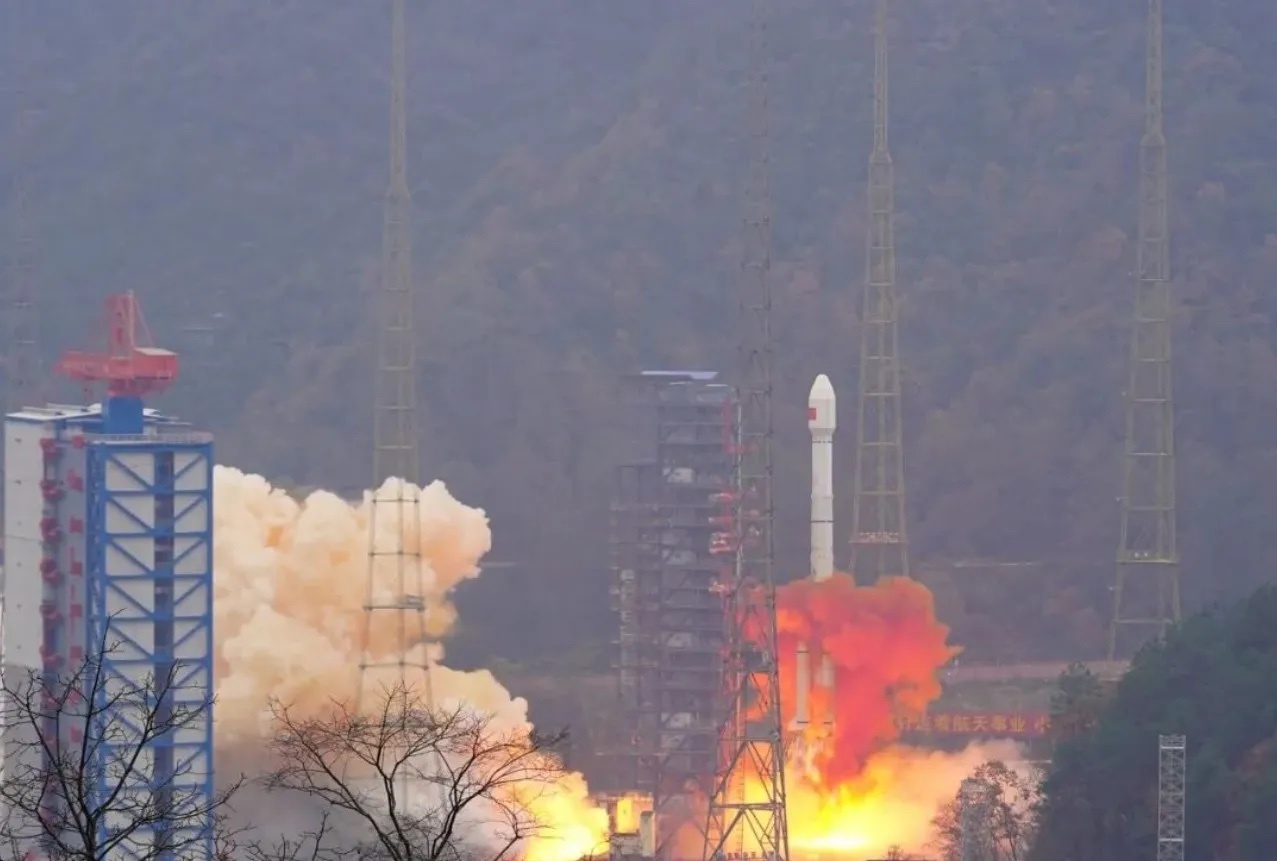28.12.2023

A Long March 3B rocket with a YZ-1 upper stage lifts off from Xichang with the 57th and 58th Beidou satellites on Dec. 26 (UTC), 2023. Credit: Ourspace
HELSINKI — China added a new pair of satellites to its Beidou positioning and navigation system late Monday, but spent stages from the launch landed within inhabited areas.
A Long March 3B equipped with a Yuanzheng-1 upper stage lifted off from the Xichang Satellite Launch Center at 10:26 p.m. Eastern Dec. 25 (0326 UTC, Dec. 26), successfully delivering two Beidou satellites into medium Earth orbit (MEO).
The YZ-1 upper stage inserted the satellites into 21,532 by 22,193-kilometer orbits inclined by 55 degrees, according to U.S. Space Force space domain awareness. The satellites were developed by the China Academy of Space Technology (CAST) under CASC, the country’s main space contractor.
The spacecraft are the 57th and 58th Beidou satellites to be launched. The pair will act as backups and reduce the operational risks to the Beidou-3 system, according to a CASC statement.
Meanwhile, a pair of the side boosters from the Long March 3B rocket used for the launch appear to have fallen to ground near inhabited areas in Guangxi region, downrange of Xichang in Sichuan province, according to apparent bystander footage appearing on Chinese social media.
One video shows a booster falling within a forested area and exploding, while another shows a falling booster and later, wreckage next to a home.
The presence of reddish-brown gas or smoke indicative of nitrogen tetroxide is visible in both, while a yellowish gas, possibly the results of unsymmetrical dimethylhydrazine (UDMH) fuel mixing with air, can be seen next to the building.
The first stage and four side boosters of the Long March 3B use the hypergolic propellant combination of hydrazine and nitrogen tetroxide. Both the nitrogen tetroxide oxidizer and UDMH fuel present serious health risks.
The areas, stated to be near Baise and Debao in Guangxi, appear consistent with drop zones indicated by airspace closure notices.
It is one of many incidents of boosters falling near inhabited areas associated with Beidou satellite launches. Another launch in 2019 saw a falling booster impact a rural building.
China’s first three launch sites were established during the Cold War. Sites deep inland were thus selected to provide a measure of protection amid tensions with the U.S. and Soviet Union.
This means launches result in rocket boosters—which separate from the main stage once they have performed their task—falling to ground downrange rather than in the oceans, as is the case with U.S. and European launches.
Authorities are understood to issue warnings and evacuation notices for areas calculated to be at risk from launch debris, reducing the risk of injuries.
The China Aerospace Science and Technology Corporation (CASC), the country’s main space contractor and manufacturer of Long March rockets, has been taking measures to constrain the drop zones with tests of grid fins, parafoils and parachutes. It is unclear if any of these measures were deployed for this mission.
Chinese commercial launch startups are currently working towards reusable rockets with a series of hop tests.
The country opened a fourth site on the coast of Hainan island, south China, in 2016, but is generally used for a handful of major missions each year. Commercial launch pads are due to become operational near Wenchang starting in 2024.
China has also begun using mobile sea platforms, but mainly for light-light rocket launches. The Long March 3B, which launches inland from Xichang, remains China’s workhorse for MEO and GEO missions.
Beidou is China’s own global navigation satellite system (GNSS) to rival the U.S. GPS, Europe’s Galileo and Russia’s GLONASS systems. China completed its construction in mid-2020.
It consists of a total of 36 active satellites, mostly in MEO, but with satellites in geostationary Earth orbit (GEO) and inclined geosynchronous orbit (IGSO). This configuration ensures continuous and stable signal coverage.
The launch was China’s 65th of 2023, marking a new national record for orbital launches in a calendar year. The previous was 64 launches, set in 2022. That record eclipsed the earlier record of 55, set in 2021.
The Beidou launch followed launches of four Tianmu-1 meteorological satellites via Kauzhou-1A solid rocket from Jiuquan Dec. 24 Eastern, and the launch of three Shiyan-24C experimental satellites via a Long March 11 solid rocket from a mobile sea platform off the coast of Guangdong province on Christmas Day.
CASC had targeted launching more than 60 times this year. Despite suffering no launch failures it has fallen someway short, with commercial space actors accounting for 16 of the 65 launches. Further launches are expected out of China in the last few days of 2023.
Quelle: SN

